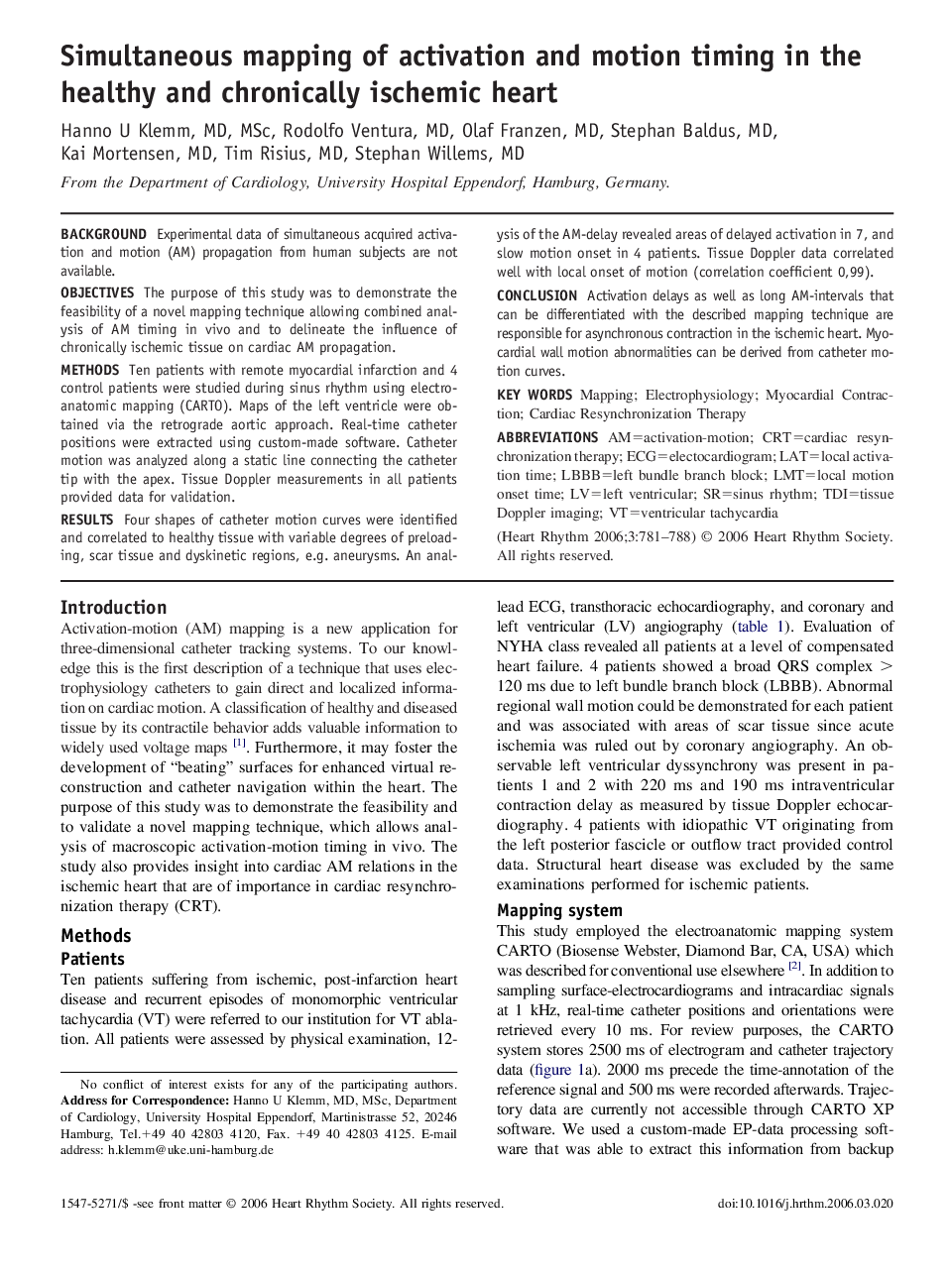| Article ID | Journal | Published Year | Pages | File Type |
|---|---|---|---|---|
| 2925626 | Heart Rhythm | 2006 | 8 Pages |
BackgroundExperimental data of simultaneous acquired activation and motion (AM) propagation from human subjects are not available.ObjectivesThe purpose of this study was to demonstrate the feasibility of a novel mapping technique allowing combined analysis of AM timing in vivo and to delineate the influence of chronically ischemic tissue on cardiac AM propagation.MethodsTen patients with remote myocardial infarction and 4 control patients were studied during sinus rhythm using electroanatomic mapping (CARTO). Maps of the left ventricle were obtained via the retrograde aortic approach. Real-time catheter positions were extracted using custom-made software. Catheter motion was analyzed along a static line connecting the catheter tip with the apex. Tissue Doppler measurements in all patients provided data for validation.ResultsFour shapes of catheter motion curves were identified and correlated to healthy tissue with variable degrees of preloading, scar tissue and dyskinetic regions, e.g. aneurysms. An analysis of the AM-delay revealed areas of delayed activation in 7, and slow motion onset in 4 patients. Tissue Doppler data correlated well with local onset of motion (correlation coefficient 0,99).ConclusionActivation delays as well as long AM-intervals that can be differentiated with the described mapping technique are responsible for asynchronous contraction in the ischemic heart. Myocardial wall motion abnormalities can be derived from catheter motion curves.
